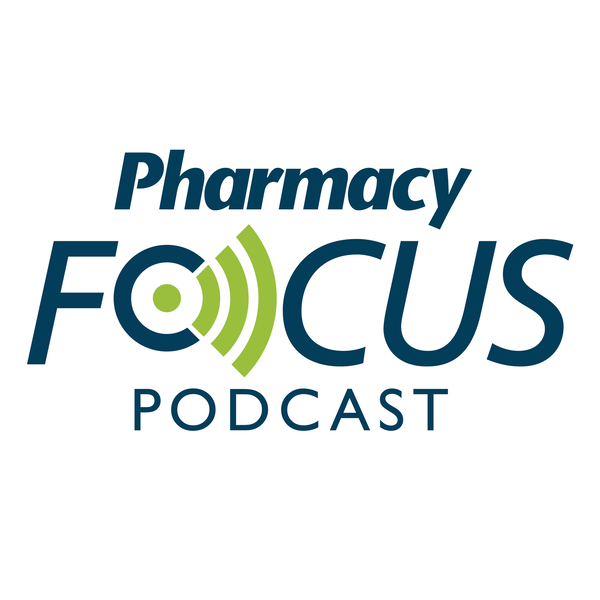Publication
Article
Pharmacy Practice in Focus: Health Systems
Confusion Persists Around the Interchangeability Designation for Biosimilars
Author(s):
The legal and common uses of “interchangeability” continue to be conflated.
With numerous adalimumab biosimilars launching in the United States in 2023, the impact of an FDA interchangeability designation has been extensively discussed with much speculation, but its commercial significance is yet to be determined. FDA is the only regulator in the world that has the legal authority to designate a biosimilar as interchangeable with its reference product, and this is stated on the biosimilar label. The FDA authority to designate biologics as “interchangeable” was created by the Biologics Price Competition and Innovation Act of 2009 enacted on March 23, 2010.1 According to the definition in that law, an interchangeable biologic is a biosimilar biological product that can be expected to produce the same clinical result as the reference product in any given patient. Additionally, the law requires the sponsor to show that “the risk in terms of safety or diminished efficacy of alternating or switching between use of the biological product and the reference product is not greater than the risk of using the reference product without such alternation or switch” for a biological product that is administered more than once to an individual.1 Once a biosimilar product is designated as an interchangeable biologic by the FDA, the biosimilar product may be substituted for the reference product by a pharmacist other than the health care provider who wrote the original prescription (albeit subject to state law).
Image credit: Aliaksandr Marko | stock.adobe.com

The FDA interchangeability designation can only apply to products that the agency has determined to be biosimilar to a standalone originator reference biologic already licensed by the FDA at least 12 years prior. Consequently, an originator biologic can never be designated as interchangeable, and a biosimilar that is designated as an interchangeable biologic remains the same product. Namely, a subsequent interchangeability designation does not change the safety, efficacy, and quality of a biosimilar already licensed by the agency nor any other aspect of that product.2 The FDA determination of interchangeability can be subsequent to the licensure and launch of a biosimilar, or it can occur concurrently with the initial approval as biosimilar.
Although a separate designation is given, the interchangeable product does not denote a higher quality standard than for a biosimilar product. There are no differences in quality between a biosimilar and an interchangeable biologic as no further modifications are made prior to the showing of interchangeability, and the same “highly similar” standards apply to both biosimilar and interchangeable products. The only difference between the biosimilar and interchangeable products is the amount of clinical data that might have been collected and that the designation has been requested by the product’s sponsor. In some cases, no additional studies were necessary, and the FDA accepted well-reasoned scientific justifications alone.3-5 Further, it is important that all stakeholders be aware that a biosimilar with the interchangeability designation is not a better biosimilar.
Then Why Pursue Interchangeability?
Few biologics are self-administrated or not administrated by the physician who prescribed them. The interchangeability designation is a legal distinction that allows a pharmacist, where they are involved, to substitute an interchangeable biologic for its reference product at their discretion (subject to state law). Such substitution will most likely be based upon a cost-saving for a key decision maker, such as payer or patient.
Consequently, the interchangeability designation is only relevant to dispensing and not prescribing.6 Namely, it is only relevant to those self-administered biologic products dispensed at the pharmacies, such as insulin, adalimumab, and etanercept. Prescribing of most biologics remains the authority of the physician, and a physician can prescribe an approved medicine for any indication (and indeed can preclude substitution for any drug or biologic). As such, the FDA interchangeability designation is not relevant to physicians, and physicians should never await the designation for biosimilars that are already available to their patients.
Misunderstanding Surrounding the Interchangeable Designation
However, there is also the common usage of the term interchangeable, which signifies that 2 products can be exchanged with each other with no change in clinical result. This is already true of biosimilars absent the FDA’s formal interchangeability designation, and indeed FDA has said that all biosimilars are already interchangeable for the purposes of physicians’ prescribing.7 However, the legal and common uses of interchangeability continue to be conflated. The resulting confusion has created the misperception by a few less informed audiences that biosimilars without such an FDA interchangeability designation cannot be switched with the reference product (or indeed with any other biosimilar product to the same reference product). This is incorrect. It is important that all stakeholders realize that the FDA interchangeability designation is a legal one and does not change the clinical benefit for the patient.6
Meanwhile, real-world evidence for biosimilars has been accumulating in Europe and other highly regulated markets and is extensive. Multiple biosimilars for many conditions have been proven to behave exactly as would be expected in both single switch and multiple switch studies, as well as during routine care as shown through reliable pharmacovigilance. This real-world evidence can provide stakeholders in the United States with additional confidence in biosimilars given the same clinical results in both naïve and established patients because the biosimilars becoming available in the country are the same products as are already used elsewhere.8-10
European health authorities, as represented by the Heads of Medicines Agencies (HMA), have concluded that European Union (EU)–licensed biosimilars should be viewed as “interchangeable,” in that they can be exchanged for the reference product and provide the same clinical effect, and that transitioning between a reference biologic and its biosimilar will neither induce nor enhance immunogenicity.11 These conclusions are supported by post-approval safety data of biosimilars published in systematic reviews carried out in 2017 and in 2021 on the safety, immunogenicity, and interchangeability of biosimilar monoclonal antibodies and fusion proteins, respectively.8,9
In a more recent review published in 2022, the authors performed a systematic review on multiple transitions between biosimilars to the same reference biologics and found no clinically meaningful reduction in efficacy or increase in adverse events in the biosimilar-to-biosimilar studies performed to date.12,13
All Biosimilars Are Interchangeable as a Scientific and Clinical Matter
As a scientific and clinical matter, all biosimilars are considered “interchangeable” with their reference product. Those regulatory authorities with the most extensive experience with biosimilars, including European Medicines Agency (EMA) and UK Medicines and Healthcare products Regulatory Agency (MHRA), in addition to FDA, have reached the same conclusion.7 They have made their conclusions public as a formal statement along with the HMA to help mitigate the confusion created by the English language, not biosimilars.11,14-15
In the joint EMA-HMA statement, the EMA Biosimilar Medicinal Products Working Party (BMWP) and HMA Working Group of Biosimilars experts clarified that additional systematic switch studies are not required to support interchangeability at the prescriber level when approval for a biosimilar is granted in the EU.11 Following the publication of the joint statement, the EMA-HMA further clarified in their “Q&A on the statement on the scientific rationale supporting interchangeability of biosimilar medicines in the EU” that their statement on the interchangeability of biosimilars also covers situations where multiple switches are taking place within the group of products that share the same reference product, or indeed between the reference product and any of its biosimilars. This is independent of frequency of switches and number of products involved.14
Similarly, MHRA has explicitly stated that “a biosimilar product is considered to be interchangeable with their [reference product (RP)], which means a prescriber can choose the biosimilar medicine over the RP (or vice versa) and expect to achieve the same therapeutic effect” and that likewise “a biosimilar product is considered to be interchangeable with another biosimilar to the same RP” in the guidance on the licensing of biosimilar products updated in November 2022.15
Conclusion
Although the US interchangeability designation was intended to facilitate the ease of use of biosimilars, it has created a level of confusion that risks having the opposite effect, which could hamper uptake and decrease patient access to life-changing medicines. It is essential that practitioners, regulators, and payers around the world understand that the current US interchangeability designation is a purely legal designation and carries no implication of greater quality.
With growing experience in biosimilars across the highly regulated market, it is becoming evident that all biosimilars are interchangeable as a scientific and clinical matter and that switches between them carry little or no additional risk. Indeed, that risk is hypothetical and unsupported by evidence.
All stakeholders can have the same confidence in any FDA-licensed biologic—both biosimilars and the originator reference, independent of an interchangeability designation or the regulatory pathway by which they are approved. Further, when physicians and their patients show confidence by treating biosimilars and their reference products with the same clinical expectations, a more competitive market for biosimilars can emerge in the United States. This facilitates access and will allow manufacturers to better support greater surety of supply.
References
1. FDA. Implementation of the Biosimilars Price Competition and Innovation Act of 2009. Accessed Aug 22, 2023. https://www.fda.gov/drugs/guidance-compliance-regulatory-information/implementation-biologics-price-competition-and-innovation-act-2009
2. FDA. Interchangeable biological products. Accessed August 22, 2023. https://www.fda.gov/media/151094/download
3. FDA. Approval letter for Semglee. FDA. Accessed August 22, 2023. https://www.accessdata.fda.gov/drugsatfda_docs/nda/2020/210605Orig1s000Approv.pdf
4. FDA. Approval letter for Cimerli. FDA. Accessed August 22, 2023. https://www.accessdata.fda.gov/drugsatfda_docs/nda/2022/761165Orig1s000Approv.pdf
5. FDA. Approval package for Rezvoglar. FDA. Accessed August 22, 2023. https://www.accessdata.fda.gov/drugsatfda_docs/nda/2022/761215Orig2s000Approv.pdf
6. Park JP, Jung B, Park HK, et al. Interchangeability biologics is a legal distinction in the USA, not a clinical one. BioDrugs. 2022;36(4):431-436. Accessed Aug 22, 2023. doi:10.1007/s40259-022-00538-6.
7. Kirkner RM. FDA’s Gottlieb Aims to End Biosimilars Groundhog Day. Manag Care. January 2019. Accessed August 22, 2023. https://lscpagepro.mydigitalpublication.com/publication/index.php?m=38924&i=562686&p=6&ver=html5
8. Kurki P, van Aerts L, Wolff-Holz E, Giezen T, Skibeli V, Weise M. Interchangeability of biosimilars: a European perspective. BioDrugs. 2017;31:83-91. doi:10.1007/s40259-017-0210-0
9. Kurki P, Barry S, Bourges I, Tsantili P, Wolff-Holz E. Safety, immunogenicity and interchangeability of biosimilar monoclonal antibodies and fusion proteins: a regulatory perspective. Drugs. 2021;81:1881-96. doi:10.1007/s40265-021-01601-2
10. Cohen HP, Blauvelt A, Rifkin RM, et al. Switching reference medicines to biosimilars: a systematic literature review of clinical outcomes. Drugs. 2018;78:463-478. doi:10.1007/s40265-018-0881-y
11. European Medicines Agency/Head of Medicines’ Agency. Statement on the scientific rationale supporting interchangeability of bio similar medicines in the EU. European Medicines Agency/Head of Medicines’ Agency. April 21, 2023. Accessed August 22, 2023. https://www.ema.europa.eu/documents/public-statement/statement-scientific-rationale-supporting-interchangeability-biosimilar-medicines-eu_en.pdf
12. Cohen HP, Hachaichi S, Bodenmueller W, et al. Switching from one biosimilar to another biosimilar of the same reference biologic: a systematic review of studies. BioDrugs. 2022;36:625-637. doi:10.1007/s40259-022-00546-6
13. Gros B, Plevris N, Constantine-Cooke N, et al. Multiple inflixim ab biosimilar switches appear to be safe and effective in a real-world inflammatory bowel disease cohort. United European Gastroenterol J. 2023;11(2):179-188. doi:10.1002/ueg2.12357
14. European Medicines Agency/Head of Medicines’ Agency. Q&A on the statement on the scientific rationale supporting interchange ability of biosimilar medicines in the EU. European Medicines Agency/Head of Medicines’ Agency. 2023. Accessed August 22, 2023. https://www.ema.europa.eu/documents/other/qa-statement-scientific-rationale-supporting-interchangeability-biosimilar-medicines-eu_en.pdf
15. UK Medicines and Healthcare products Regulatory Agency. Guidance on the licensing of biosimilar products. European Medicines Agency/Head of Medicines’ Agency. Accessed August 22, 2023. https://www.gov.uk/government/publications/guidance-on-the-licensing-of-biosimilar-products
About the Authors
Joseph Park, PhD, is the senior manager, regulatory strategy and policy at Samsung Bioepis.
Gillian Woollett, DPhil, MA, is the head of regulatory strategy and policy at Samsung Bioepis.

Newsletter
Stay informed on drug updates, treatment guidelines, and pharmacy practice trends—subscribe to Pharmacy Times for weekly clinical insights.






